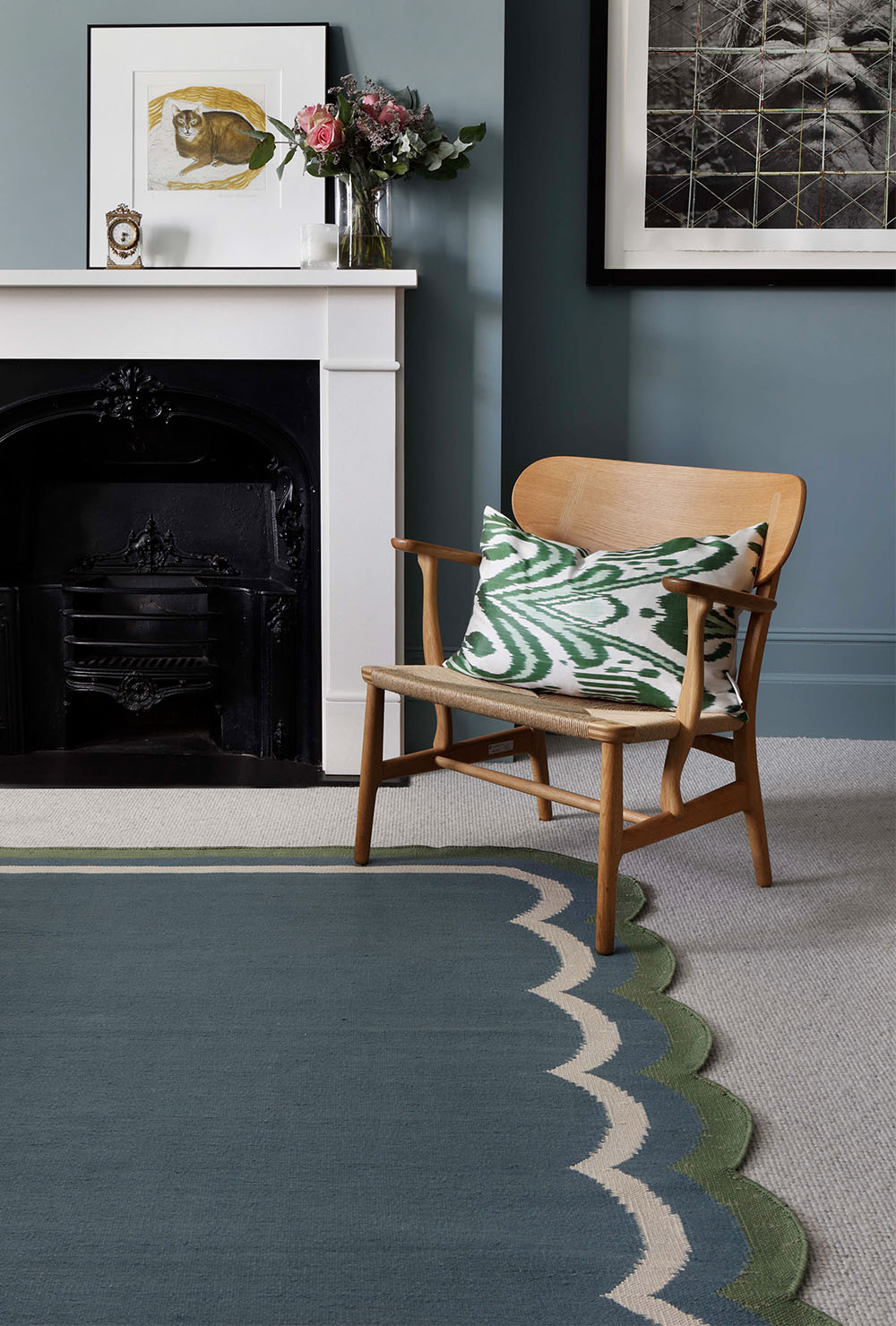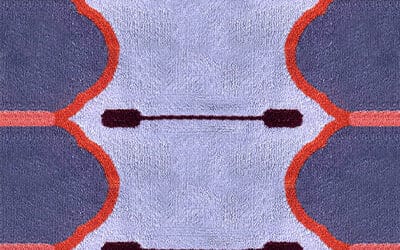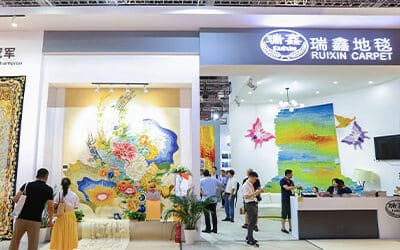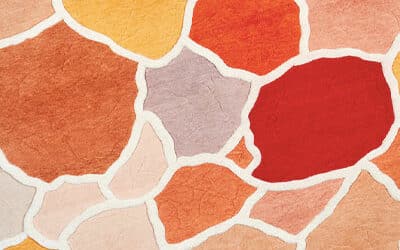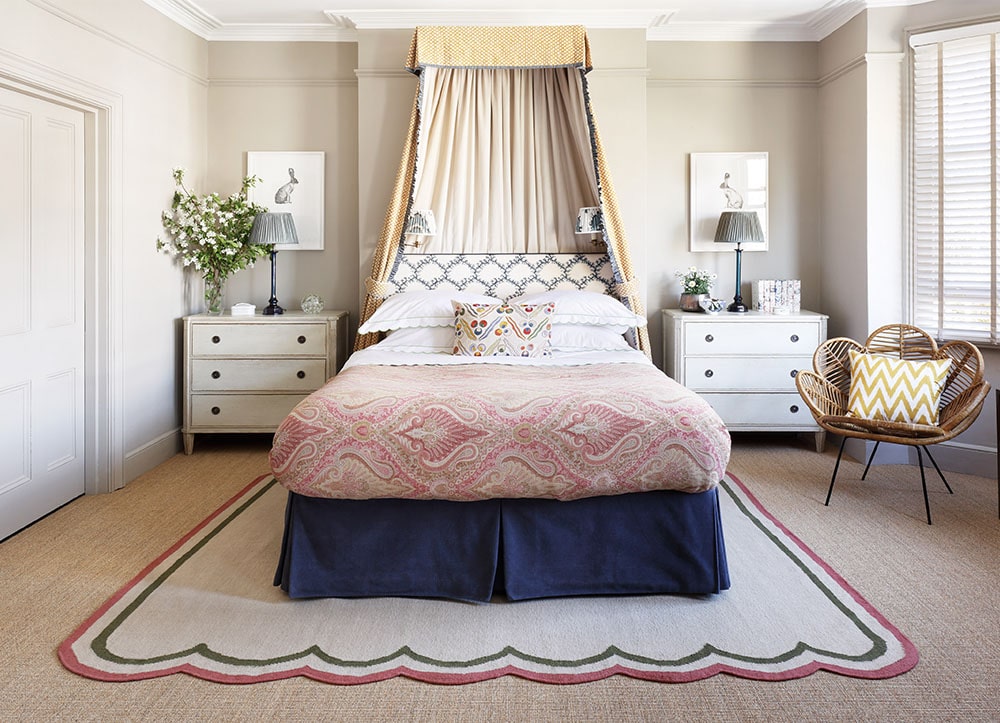
How did the Scallop rug collaboration with Salvesen Graham come about?
We were asked to work on a rug for Salvesen Graham’s showroom. We looked at options together and Nicole (Salvesen) and Mary (Graham) asked if we could create a scallop pattern on the edge of the rug. They meant just to have the scallop pattern woven-in like a regular rug, but I went away wondering if we could actually cut around the scallop-shaped edges instead. I wasn’t certain technically how that would work. I spoke to our weavers who wanted to give it a try. After a few attempts using various techniques they succeeded in cutting out the shape of the Scallop. At that point it got really exciting as we knew a scallop cut into a shape as the edge of a flatweave rug has never been done before. Shaped knotted rugs have been made, but not shaped flatweaves; we were onto something big! Mary, Nicole and I decided we should evolve this into more than a single rug for the showroom, and our collaboration was born.
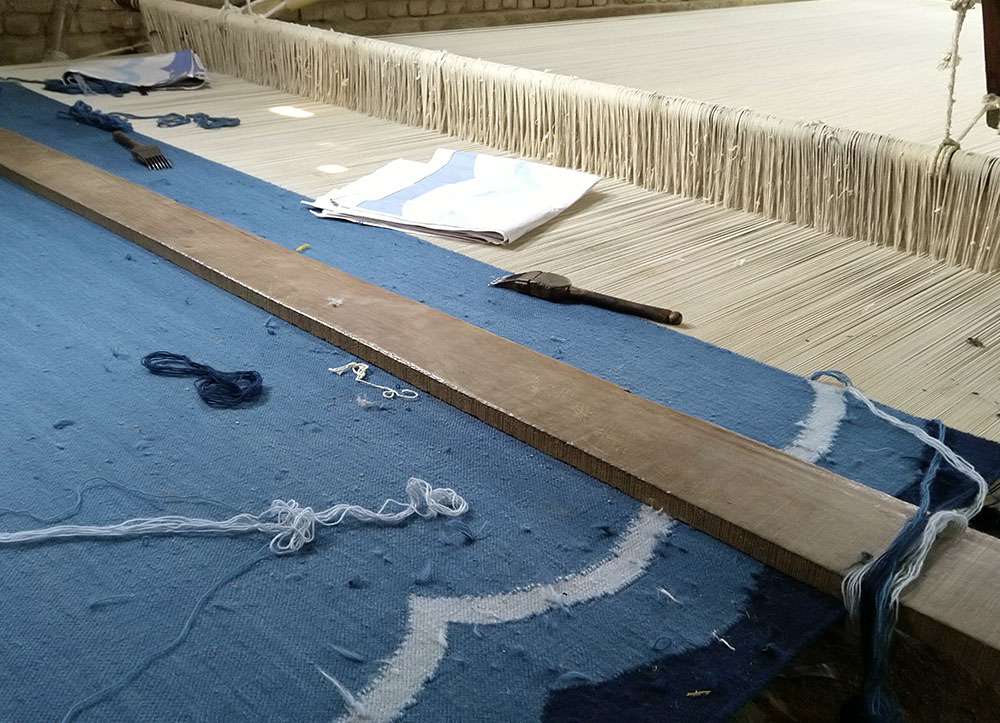
Can you go into more detail about the scallop-edge technique?
Scallop is woven on horizontal looms as a weft-faced (plain weave) flatweave dhurrie. Any shaped rug has to be woven into a rectangle or square first; it’s the same with Scallop. The pattern of the scallop edge is woven as if the outer border colour bleeds all the way to the edge. The colour change on the inner scallop border is achieved through a technique called dovetailing which means a colour change happens when adjoining weft colours meet and are woven onto the same ‘shared‘ warp fiber. Dovetailing creates a discrete ‘stepped‘ profile on the design’s edge. The technique ensures the weave is tight without ‘slits‘ or openings, although slits are often intentional features in flatweaves.
The real design challenge is to consistently weave each scallop shape with precisely the same curve scale on both the inner and outer areas of the double border. This takes more care, time and expertise. The outer border (which bleeds to the edge) is then marked out and cut to shape by hand. We use the same colour to bind and hand finish the edge around each scallop curve – although we’ve played with contrasting binding colours too! This adds to the amount of hand-finishing work as it essentially creates a longer circumference than a straight edge.
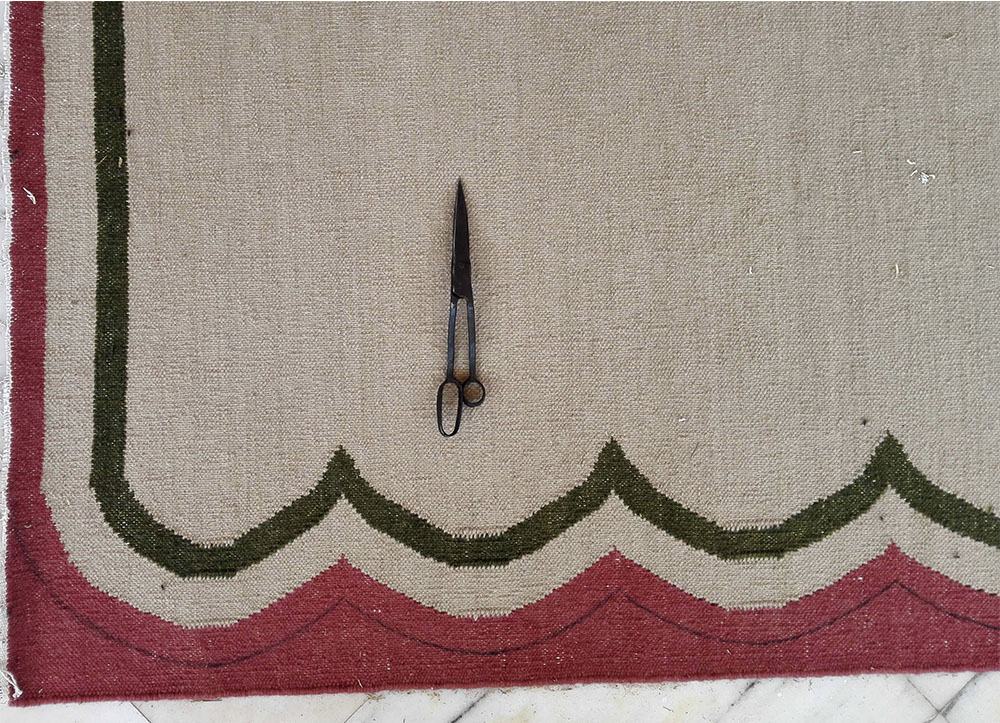
Scallop looks like it’s adaptable to any design scheme.
I think that as most of the surface area of the Scallop rug is a solid colour with only the double border in contrasting colours, the rug is very usable and adaptable. Clients feel it gives them ‘permission’ to get more colourful in a room without it feeling overpowering. Scallop is just a dash of colour that sits quite easily in so many schemes. Our original colourways included four colours, two of which were more neutral, thinking everyone can always use a neutral. What we found out, however, is that the neutral borders were a bit dull and that Scallop actually suited having brighter and more contrasting colours on the borders to play against the solid colour field. The next collection of colours didn’t have any neutral borders and we even changed the ground colour on a few (using both a denim blue and pale blue) and that’s been really successful.
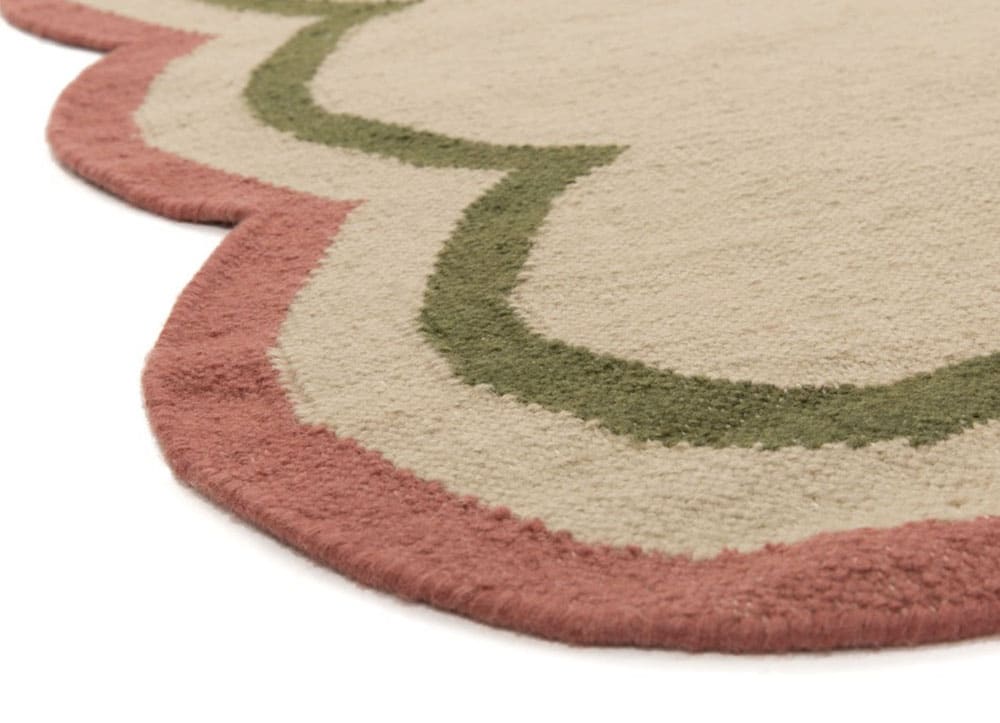
What is it about scallops that create a feel-good response, and how important is that during times of crisis like Covid-19?
I’m originally from Kentucky in the US, and scallops in design were common as far back as I can remember. Scallops were on table linens, bed linen and I even had a scallop-shaped holder growing up where I’d hang my hair ribbons! I think people are drawn to curves in general. We’re seeing the scallop shape being hugely embraced at the moment because it’s soft and gentle and serene. It’s a small detail that doesn’t dominate a space whether it’s on a curtain pelmet, a valance, or of course on a rug. Sometimes it’s the simplest things that work best in good design! With most of us spending an inordinate amount of time in our homes now, I think those feelings of serenity and softness mean a great deal.
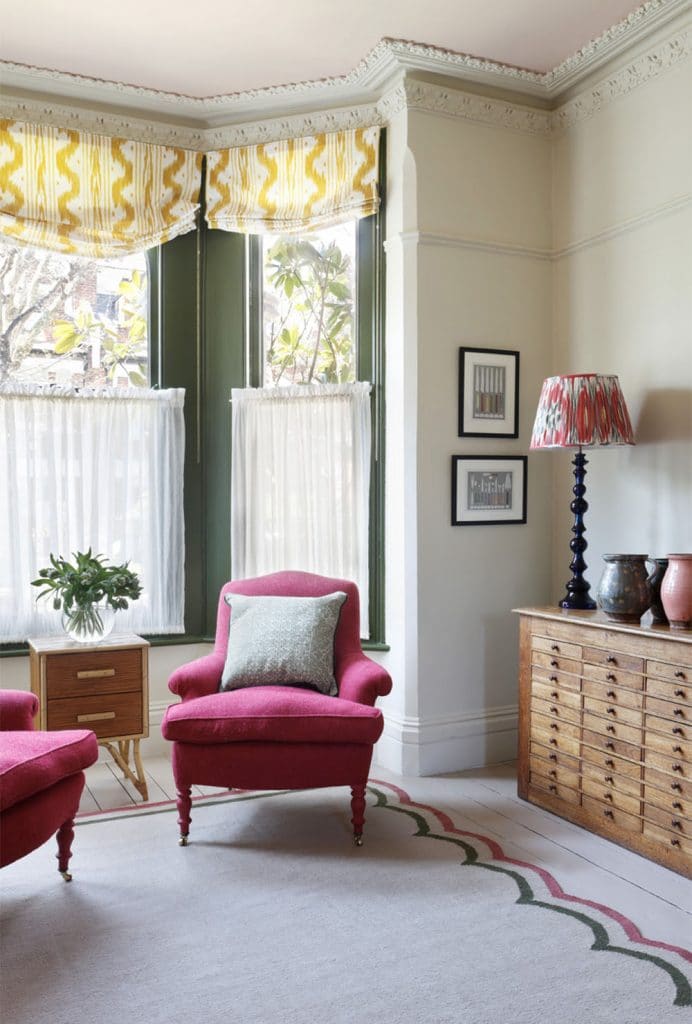
Scallop is the inaugural rug in your Hamptons Collection of seven designs – tell us more!
Our Hamptons Collection is composed exclusively of textural flatweave rugs inspired by the bright and crisp aesthetic of US east coast beach communities like the hamlets and villages of The Hamptons on the eastern edge of Long Island, New York. While the designs nod to the nautical—including Scallop—the collection highlights linear often repetitive motifs like the Pebble rug. The colourways are fresh and versatile and lend themselves to the inviting, casual feel of beachside chic found everywhere in The Hamptons. The overall feel is more casual but the same timeless elegance that imbues all of our rugs remain. I think what we’ve discovered and enjoyed is how some of our interior designers have taken rugs we created as something ‘casual’ (just by the nature of being a flatweave) but used them in opulent spaces helping to make those spaces feel more accessible. It’s almost like the formality of the room and the casual feel of the rug meet in the middle to make the space feel inviting and cool.

